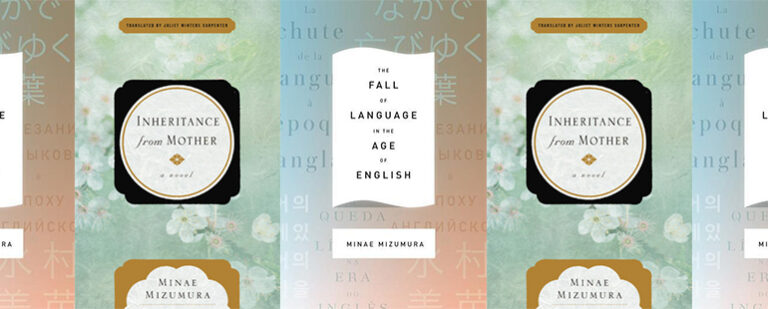The Meaning of Food in Eat Joy
Growing up, I felt unmistakably white. But when we visited the “Okie” side of my family in California’s Central Valley, I often avoided the classic American food served at gatherings there, salty and sweet greasy foods with hamburger meat and sauces that all ran together on my plate—all things I didn’t like probably because we never ate that way at home. My mother’s food—fried rice, refried beans, enchiladas—was made from recipes my mother learned from her Grandma Mercedes, who immigrated from Mexico. Since you can’t see this heritage just by looking at me, these family recipes feel transgressive, as does our family tradition of making tamales at Christmas. My family pokes fun at me for my randomized approach to the dish, mystery tamales piling up next to me that contain some combination, with no discernable pattern, of roasted green chiles, monterey jack, shredded beef, and homemade red sauce. My mother especially chastises me for not being faithful to traditional recipes. But these tamales make sense to me no matter how I arrange the ingredients. I don’t feel like I belong to my Mexican heritage, but I do belong to my family, and these tamales feel like they represent our identity best. I also love surprises.
These recipes mean so much for my mother, especially now that her grandma is gone: Grandma Mercedes was there when her own parents were not, lavishing on her the love and connection she craved. Whenever I hear my mother talk about Grandma Mercedes, her face lights up, and she becomes a little girlish. When she cooks, she is remembering Rodeo Drive shopping trips and Grandma Mercedes’s sensational stories. Food has always been meaningful for my father, too. He spent his childhood leapfrogging from one government project to the next and subsisted off of ketchup and sugar sandwiches; baked beans; the occasional, coveted piece of country-fried chicken; and other foods my health-conscious mother would never allow me to eat. Later, he made my decadent school lunches—roast beef with au juice, chicken curry wraps, and indulgent flufferbutter sandwiches—and at home, he made me quesadillas and baked potatoes, comfort foods I came to rely on when I began to have serious stomach issues later in life. Just as my mother transferred to me with each cheese enchilada the love and care she so badly needed from Grandma Mercedes, my father’s ability to provide me with good food became an essential part of his way of caring for me. When I went away to boarding school, which suddenly prevented him from providing for me in this way, his relief was obvious when he had a meal in the school’s dining hall and realized that I would be okay without him.
Just as formative experiences shaped the foods my parents made for me, Sandra Cisneros remembers her grandfather’s sturdy tortillas, a by-product not of his Central Mexico upbringing but of the hardships that followed. In her Bon Appetit essay from this past February, “My Greatest Inheritance? A Peanut Butter Taco,” Cisneros writes, “He was a man who had survived the Mexican Revolution, the Depression, and two world wars, a campesino from the Mexican countryside with a face carved from obsidian, a cliff of weedy eyebrows, and skin the polished color of the red clay from his native Guanajuato.” First to feed himself, then to feed his large family, Cisneros’s grandpa became expert at producing a towering stack of utilitarian tortillas, “a bigger, thicker, hardier variety, like the giant Martian sunflowers [he] grew in his backyard.” Aside from accompanying soup or making the dog food stretch, the tortillas eventually morphed into a surprising snack for young Cisneros, a peanut butter taco. The tortilla was more delicious than bread with the peanut butter melted on it. “Grandpa Cordero . . . passed down to me his peanut butter tacos, his mistrust of authority, and his hunger for home,” Cisneros says, unpeeling the layers of the simplest after school snack and all of the hardships it took to make it so simple. She demonstrates, too, how foods can become lessons that teach us more than flavors or recipes, that teach us value systems and ideas.
In Eat Joy, Natalie Eve Garrett collects short essays by 31 different writers, each with a recipe linked to it. The writers capture similar relationships to food that Cisneros and I have, where food goes deeper than simple nourishment. “When I embarked on this collection,” Garrett writes, “I hoped to create a feast of stories about making mistakes, summoning strength, getting lost and trying to find a way back. I hungered for compassionate stories that reveled in taste, whether savory, bitter, or sweet—stories that used food as a conduit for unearthing memories.” The essays reveal how foods hold the shape of memories and people and places, nourishment intertwined with the forces that shaped it. Diana Abu-Jaber, for example, the daughter of a Jordanian immigrant, describes her understanding of home in “Leaves,” which concludes with a recipe for Za’atar bi Zayt. “The spices bring back memory—the oldest, shining memories, that came long before any painful new mistakes and reversals,” she writes, noting the spice mixture’s power to dim the trauma of leaving two husbands. She goes on to examine how cooking changes one’s relationship with home, especially when transported or transplanted in a new place. “It tells us we are connected to something larger than ourselves, something older, something like a home,” Abu-Jaber says. “And then, having eaten, we get to leave it again.” Cooking, food, even just a spice become a home one can fledge to and from, and Abu-Jaber shows us how this food yokes us to something much larger than ourselves.
Iranian refugee Porochista Khakpour also unpacks the intersection of food with family, self, and history, particularly how this translates into comfort food. Rice is essential to Khakpour even after a doctor tells her that she is allergic to it. “Rice is not the vessel for other good things as it is in many cultures,” Khakpour explains in “Calculated Destruction,” “but quite often the main attraction . . . Iranian people take an absurd amount of pride in their rice. We’re talking heaping plates of basmati rice cooked in oil and then, once served, lovingly patted down with butter. If you’re lucky it will be smudged in saffron.” Tahdig, “the crispy near-burnt rice that’s akin to the crust in a burnt pot of rice,” is especially beloved. The reverence with which Khakpour describes rice reveals why she finds it so comforting and why she ignores the doctor’s diagnosis since “[l]iving without rice does not make much sense to Iranians.” Khakpour can’t be parted from what rice means to her, for its taste and its link to her identity.
Growing up in a conservative Midwestern town, daughter of Vietnamese refugees Beth (Bich Minh) Nguyen was less able to establish her identity through food than others because she found herself split between Vietnamese and American cultures as a child. “The definitions of these identities were at once clear and amorphous, subject to shifts in culturally determined tastes and our growing awareness of being two selves in almost every instance,” Nguyen notes in “Spaghetti and Books.” Vietnamese food like fish sauce and dried squid sat next to ketchup and Little Debbie snack cakes. This melding of foods in her household led to American food becoming essential to what she eats when she seeks comfort. When people ask her what she likes to cook, they “are often surprised or disappointed when [her] answer is not Vietnamese food.” She adds, “The urge to essentialize is strong.” Nguyen observes the judgment cast on her when she favors food that doesn’t look like the food she should like most, a judgment that overlooks how food can be—and is—something that is loaded. Though she’s always loved Vietnamese food, she also finds that it “sometimes reminds [her] too much of family and childhood and growing up in a mostly white area of Michigan—all of which can bring more complication and questioning than comfort.” Food is a part of our identities, but Nguyen points out that this is sometimes in a way that goes against assumptions, whether because its connection to home is fraught or because, as in Khakpour’s case, one’s body and one’s ethnicity are pitted against each other.
Like Nguyen, Rakesh Satyal found refuge and purpose in a food commonly served in American households. “I turned to piemaking as a coping mechanism,” Satyal writes in “Bake Your Fear.” “I figured that if I actually made the confections readily associated with those who were tormenting me, I might circumvent the sometimes-brutal circumstances in which I found myself. Why not commit to something so dearly embraced by American culture to see if it would legitimize me more?” So fiercely bullied by his classmates when he was young, Satyal, who grew up in Ohio, sought comfort in a quintessentially American baked good. Even just the acting of doodling a pie in the pages of his notebook was liberating. “The scariness of the world around me meant that I had to contain my ostentation within myself,” he says, “but I could unfetter it on the page, as deftly as my hands stirred together blueberries and sugar and cinnamon for a filling.” The freedom Satyal felt went further than race. Through his decorative pie baking, Satyal also metaphorically waved the Pride flag—he hadn’t been able to come out yet. Satyal both turned iconic American pie against his Midwestern oppressors and used it to express his identity as a gay man before he could safely come out, a way of doubly wielding the food’s history to serve his own identity.
Mira Jacob, on the other hand, sought solace in the taste of home when she was bullied for her race or otherwise wounded. “Something terrible has happened,” Jacob writes in “Dark Leaves and Warm Milk.” “It could be the boys in fourth grade calling you a monkey, it could be your high school best friend going after another of your exes, it could be not getting pregnant despite months of trying and coming from a continent of seemingly endlessly fertile women. Your face is a cracked plate.” Here, Jacob covers the events she’s experienced across decades of her life, and in doing so, she shows how these circumstances all set up for one thing: her mother making her chai that they will drink together, which provides double comfort. “[T]his is how all of your life’s disasters have tasted,” Jacob says, “like dark leaves and warm milk.” The chai-making process is an ingredient itself for her soothing. “It is not possible for your mother to take your disasters from you,” Jacobs acknowledges, “and it’s that tiny piece of knowledge that you save yourselves from by sipping slowly, by talking about the neighbor’s kids and political scandals and anything else you can think of to fill the silence.” Yes, there’s a limit to chai as comfort, it cannot wash everything away, but making the chai, the chai itself, and the processing that happens along the way allows Jacob to begin to heal.
Besides tamales, my family has one other important Christmas ritual: come December 1, candy bar fudge is fair game in my family. Candy bar fudge, or CBF as we call it, is a family classic, the first treasured recipe I remember (though my father’s caramel corn made by vigorously shaking popcorn and a brown sugar butter concoction in a brown paper grocery bag is a close second). The best way I know how to describe CBF is as a homemade Snickers: a layer of fudge slathered with a peanut-caramel mixture held fast by a hard semi-sweet chocolate top. We’re famed for it. People always ask for the recipe, and though it’s a simple one, we hold it close to our chests. To preserve its sacredness, we decreed that CBF can only be made during the month of December; we broke this rule just once so that we could make CBF for my July wedding favors. Now that I live 2,500 miles away from my parents, my mother overnights package of CBF each December 1, a tradition that has taken on special import in a year when we can’t be together for the holidays. We won’t get to make tamales as a family this year, so we’ll bide our time till next December by eating candy bar fudge.
This piece was originally published on December 2, 2020.


